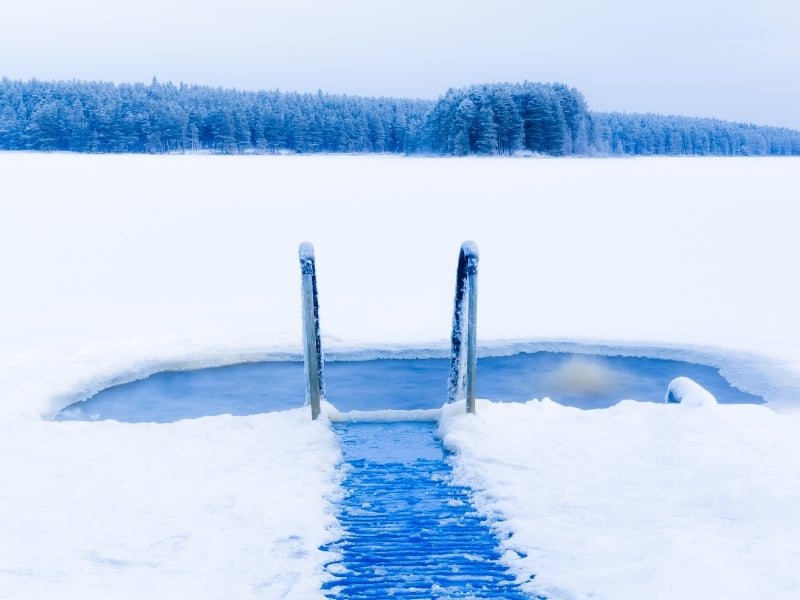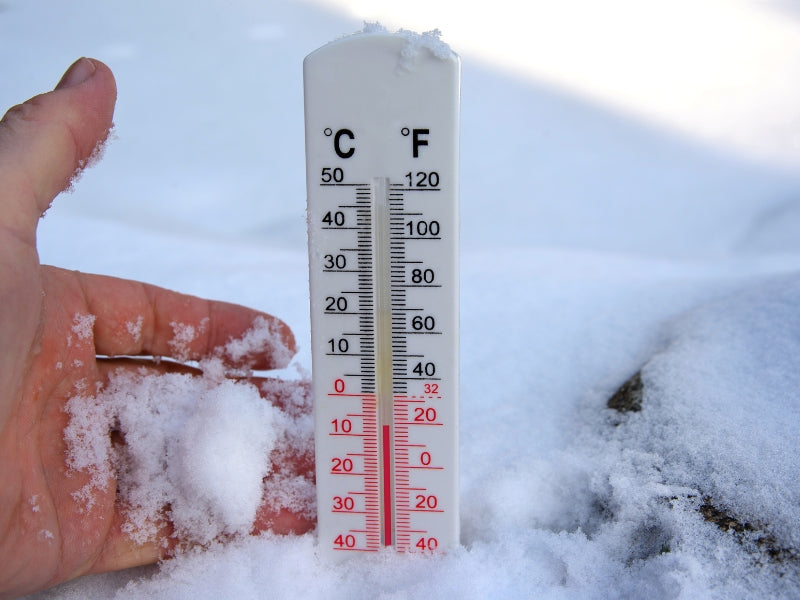If you are new to cold plunging, you may be wondering how cold should the water be?
It is important to ensure the water is just right to maximise the benefits without causing possible harm.
We will also look at ways to get the water to your desired temperature and keep it nice and cool.
What is the Recommended Temperature for a Cold Bath?

Ideally, your ice bath or cold plunge should be no hotter than 60°F, or around 15°C.
At this point, the water is considered to be cold enough to provide you with a variety of therapeutic benefits, both physical and mental benefits period however, real ice bath professionals know that the colder you go, the more intense these benefits seem to be.
For people who regularly do cold plunges, temperatures between 40° and 50°F, or between 4° and 10°C are recommended.
However, as a beginner, you probably don't want to start that low, because it will be far too cold and send your body into a shock. It's not like it's going to kill you, but it might scare you away from taking cold plunges again. Beginners should start off at temperatures no cooler than 60°F.

How to Keep the Cold Plunge Cold
If you're trying to take cold plunges at home, chances are that you don't have professional equipment. Therefore, there are some things you can do to cool down that water to the point where it will provide you with all of these benefits.
First and foremost, if you're taking a cold plunge, set up your bath somewhere where there's no direct sunlight, or else that water won't stay cold for very long.
The easiest way to cool down that water is to use ice. It's a low-cost method to cool down the water as quickly and as efficiently as possible. A tip to follow is to use very large blocks of ice, as these will last much longer than smaller ice cubes. Small ice cubes will melt quickly, and the water won't stay cold for very long.
If you are serious about taking regular ice baths, you might want to invest in a chiller. A chiller is a special device that cools down the water, circulates it, and may even filter it as well, depending on the model.
If you have a bit of money to invest, it's a good option for those who want to take regular ice baths, and for those who want to maintain consistency in terms of temperature.
How Much Ice Will I Need?
The reason we recommend getting a chiller is quite simply because you'll need a whole lot of ice every time you want to take a cold plunge. Depending on the size of your ice barrel, and your own dimensions, you may require anywhere between 40 and 100 lbs of ice.
Of course, it also depends on exactly how cool you would like the water to be and the ambient temperature. If you live somewhere that gets very cold in the winter time, you might not even need any ice to begin with.
How Cold is Too Cold?

You'd be surprised as to what your body can handle, but there is a limit as to how cold a cold plunge should be. Generally speaking, most enthusiasts recommend not going below 40°F or around 4°C.
With that being said, if you can handle the water being a couple of degrees colder, you are more than welcome to try it. Just remember that at a certain point, the water will simply freeze, and you won't physically be able to take your cold plunge.
Something you need to remember is that the risk of cold injuries like frostbite and hypothermia don't just depend on the temperature, but also how long you stay in the cold plunge.
Always take proper safety precautions, because there are certain risks associated with this practice.
Adjusting to the Cold

As a beginner, you might not be able to tolerate the cold so well. If you're really interested in taking a cold plunge, but you're a bit nervous about it, just start off at the warmer end of the temperature range, and then slowly work your way down. You can do the same in terms of duration.
Start by taking a cold plunge for just 30 seconds, and then work your way up in 10 second increments.
If you're super sensitive to cold water, you could try starting with a temperature of anywhere between 93 and 95°F, or between 34 and 35°C, and then slowly cool the water down as time goes on. It's all about being able to build up tolerance over a prolonged period of time.





